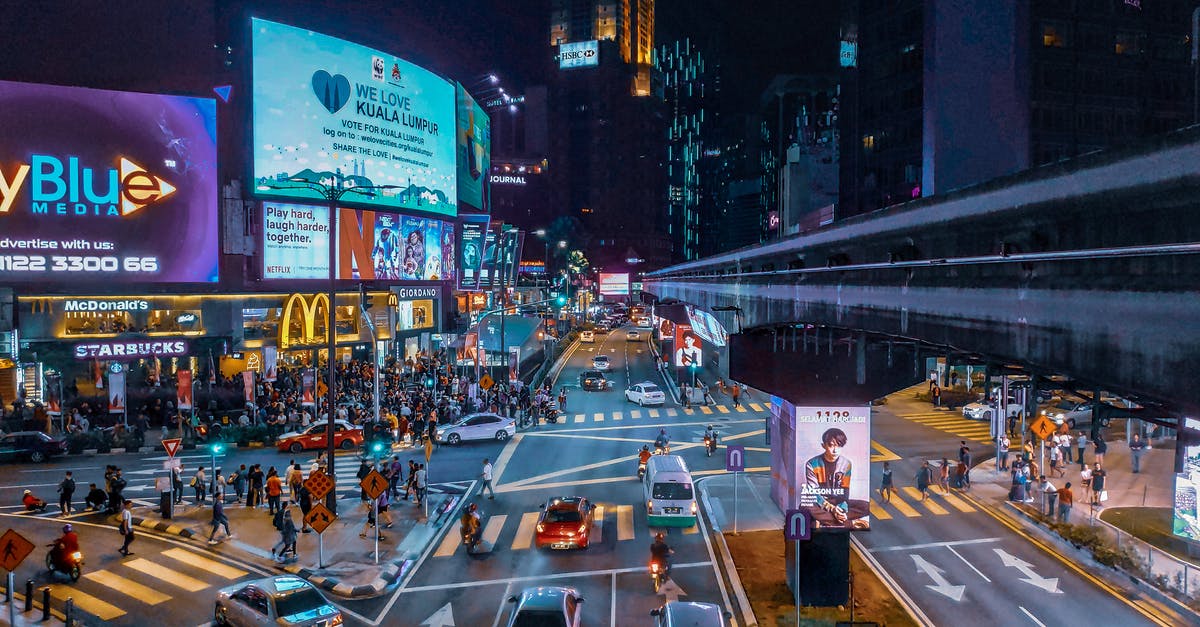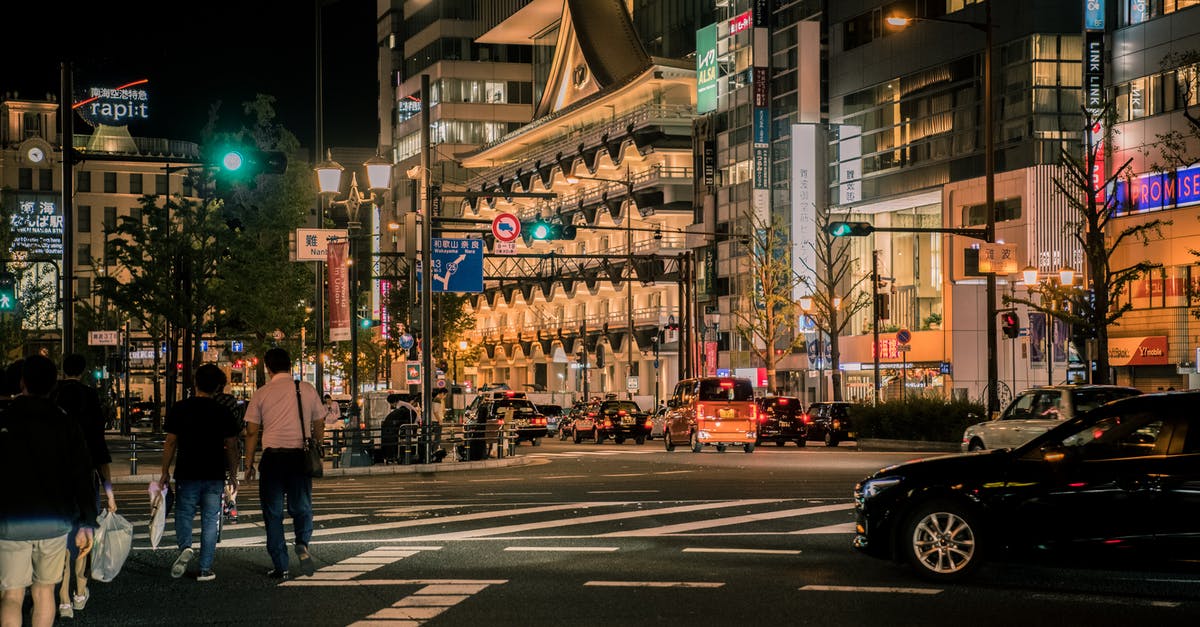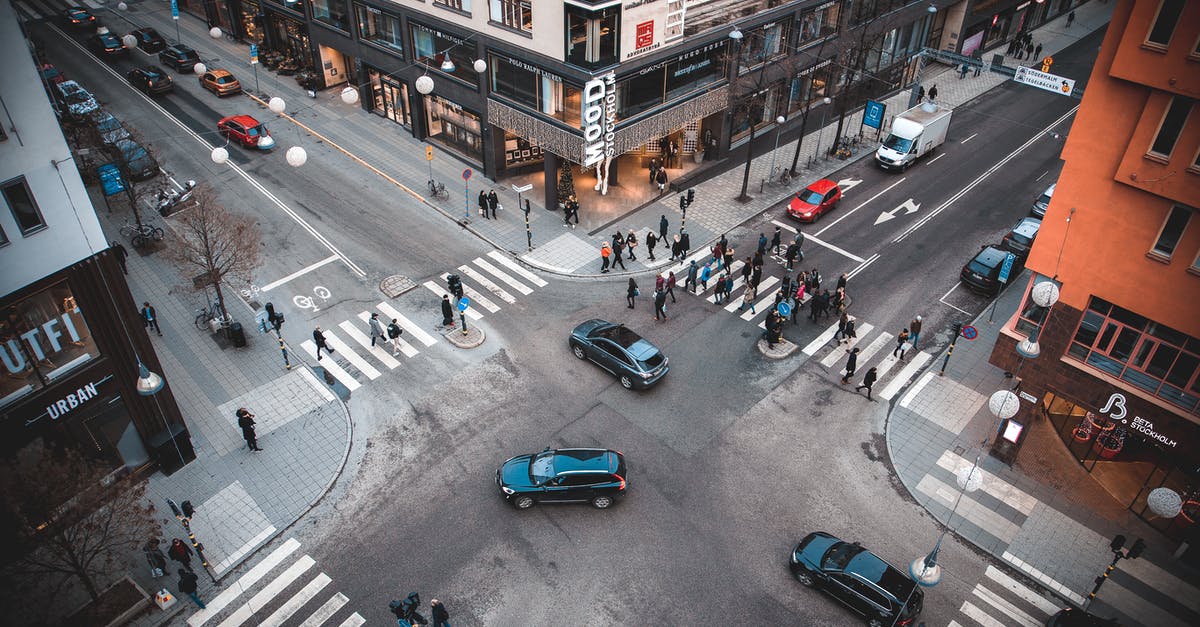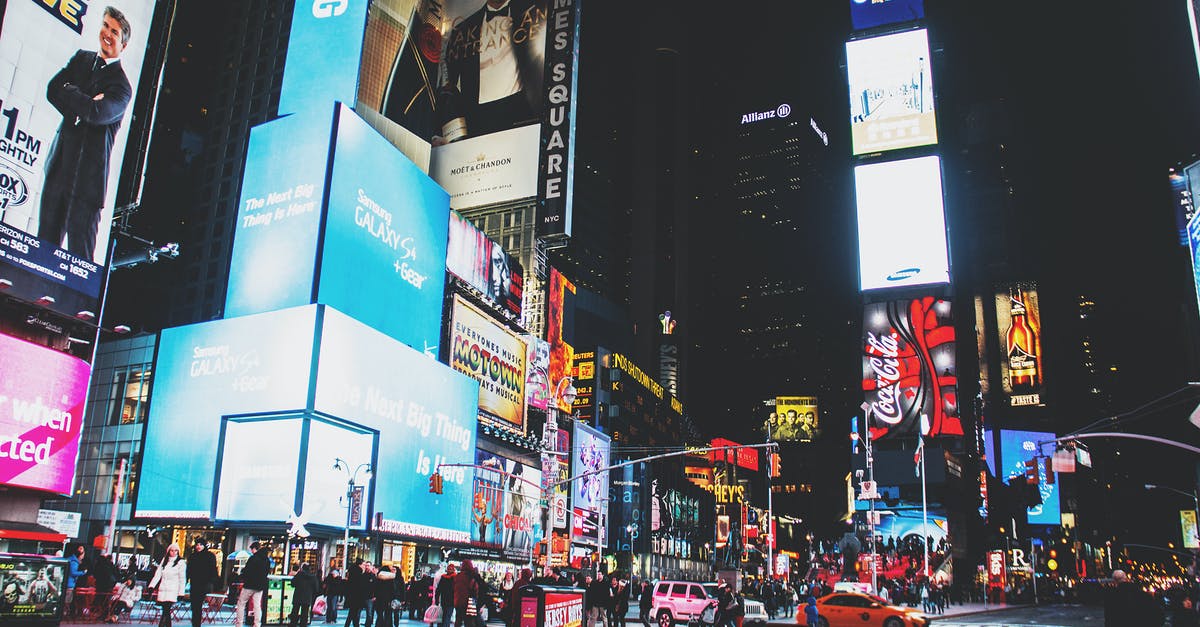Traffic law UK, pedestrians

The following scenario has happened to me a lot in London, UK:
I'm walking straight and am about to cross a street that goes orthogonal to my direction, without a traffic light or zebra crossing. A car that first goes parallel on the street next to me wants to turn into that orthogonal street. As I'm crossing the street (A) the car stops abruptly and the driver looks angrily or honks at me or (B) the car just keeps going and I have to dart out of its way in the last moment.
Where I come from, the drivers are at fault in this scenario. What's the law in the UK?
Best Answer
American in London for 14 years. The mystery has finally broken for me on this topic, quite recently. First let me say that every other answer is completely correct. But, none of them really unravel the mystery of the cultural difference. When I first arrived here, I was alarmed that it seemed pedestrians "yield right-of-way to cars". This is a big misrepresentation. Let us look at history.
Roads were originally for walking, and later, the occasional horse and/or carriages at or close to walking speed. Then, bicycles and motor cars arrived, eventually traveling significantly faster than foot traffic. The crux of London road use is that nothing ever fundamentally changed: all traffic is road traffic and all users are expected to watch out for their own safely and the safety of others. This includes responsibilities of pedestrians as well as responsibilities of vehicle operators.
The UK driving manual even includes a section on the responsibilities of foot traffic. See https://www.gov.uk/guidance/the-highway-code/rules-for-pedestrians-1-to-35
What follows naturally from this is, by stepping into the path of an oncoming car, you have inconvenienced that driver by causing him to slow down - and also making him fear for the possibility of a traumatic collision. Try this with another pedestrian, perhaps at the shopping mall? Turn suddenly and step directly in the path of your neighbour, close enough that they can not be reasonably expected to stop before bumping you. The reaction will be anger. And this is exactly what the London driver feels when you encroach on his otherwise peaceful, non-murderous driving. Legally, he is compelled to stop for you, but it is rude that you have inconvenienced him. In a British face-to-face situation, you would have immediately apologized, and he would have apologized in return to de-escalate the situation.
There is a stark contrast in history with what happened on American roads. The motor cars arrived, became faster, and the legislation followed. They created crosswalks, pedestrian traffic signals, and jaywalking laws to essentially outlaw walking on the road. It's important to note that although various pedestrian crossing systems and refuge structures arrived in the UK road system, none of them replaced the original and natural right to walk in the road. (That only happened when the Motorway was introduced. Pedestrians and certain categories of vehicles and drivers are simply not allowed on the motorway.)
Now if you dear reader have learned something from the above, then read the other answers and comments and you may begin to understand the principles of road use and how they derive from face-to-face conventions.
This is part of a much greater cultural difference: that of rules-based vs. principles-based systems. In American law and accounting, almost everything is rules-based.
Pictures about "Traffic law UK, pedestrians"



Do pedestrians have priority over cars UK?
'Hierarchy of road users' The hierarchy places road users in order from most to least at risk of being injured, like so: Pedestrians - children, older adults and disabled people being more at risk. Cyclists, horse riders and drivers of horse-drawn vehicles.Do I have to give way to pedestrians?
Pedestrians have priority regardless of if they have already started crossing the road or are preparing to do so. The rule says: "At a junction you should give way to pedestrians crossing or waiting to cross a road into which or from which you are turning."Can pedestrians walk on the road UK?
Pedestrians are perfectly entitled to walk on country lanes and other roads which have no pavement however they have a duty to take reasonable care for their own safety.What are the rules for a pedestrian?
Walk with care and with all sense. Look towards oncoming traffic....You may tumble on to the traffic.- Always hold hands of children while crossing the road.
- Avoid using roads for morning walks and jogging.
- Take extra care if you have to cross the road on or near a crest or curve.
- Avoid crossing road between parked cars.
Dealing with pedestrians (and a cyclist) after the updates
More answers regarding traffic law UK, pedestrians
Answer 2
Nick C has answered from a legal perspective.
In terms of everyday norms in London, if there is not a marked crossing, you should wait for a safe gap in the traffic. There is no special status for intersections, unlike (for example) some American cities.
If, when you arrive at the side road, you see that a car on the main road is planning to turn, you should wait. If there is no evidence that any cars are planning to turn, it is reasonable to cross.
Answer 3
Nick's answer is only partially correct. He has quoted the rules for motor vehicles. There are several other parts of the highway code that apply here.
Section 7 - part of Green cross code
B Stop just before you get to the kerb, where you can see if anything is coming. Do not get too close to the traffic. If there’s no pavement, keep back from the edge of the road but make sure you can still see approaching traffic.
C Look all around for traffic and listen. Traffic could come from any direction. Listen as well, because you can sometimes hear traffic before you see it.
D If traffic is coming, let it pass. Look all around again and listen. Do not cross until there is a safe gap in the traffic and you are certain that there is plenty of time. Remember, even if traffic is a long way off, it may be approaching very quickly.
Rule 8
Rule 8 At a junction. When crossing the road, look out for traffic turning into the road, especially from behind you. If you have started crossing and traffic wants to turn into the road, you have priority and they should give way (see Rule 170).
So if you see a car or bus is to turn into the road you stop.
In the cases you mentionm yes you have priority but you should not have started either.
Answer 4
In this the UK is completely different from most European countries: in practice, a pedestrian is not accorded priority over a car turning into a side street, whatever the Highway Code may say.
If you want to live a long and happy life, you must get used to it, I'm afraid.
Answer 5
Less law, more from experience... In general, if you obstruct a vehicle turning in to a road you can expect the driver to be irritated.
- As a pedestrian entering the road you are expected to be aware of your surroundings. If you are obstructing a junction you'll be interpreted as either not being aware or intentionally obstructing the driver.
- If a turning vehicle is obstructed, the road they are turning out of is also obstructed by you. A lot of people are being held up by your action.
- A driver might assume that you wouldn't have entered the road if you didn't expect to be clear by the time they turned, in which case they'll keep moving.
- A vehicle that has to act to avoid you may force other vehicles to act suddenly as well.
Answer 6
Quoting from https://www.gov.uk/government/news/the-highway-code-8-changes-you-need-to-know-from-29-january-2022:
"The updated code clarifies that:
when people are crossing or waiting to cross at a junction, other traffic should give way
if people have started crossing and traffic wants to turn into the road, the people crossing have priority and the traffic should give way
people driving, riding a motorcycle or cycling must give way to people on a zebra crossing and people walking and cycling on a parallel crossing
A parallel crossing is similar to a zebra crossing, but includes a cycle route alongside the black and white stripes."
The updated highway code clarifies that even when pedestrians have not started crossing yet, they have the right of way in the situation I described. Sadly, even the updated version uses "should" for the situation I described, and use "must" only for the additional zebra stripes.
Answer 7
The main factors are:
- did you start crossing before the driver started turning? (if yes, you have right of way, and the driver's honking may be illegal harassment -- UK motoring law bans the use of the horn except "while your vehicle is moving and you need to warn other road users of your presence" or "when another road user poses a danger" (Highway Code rule 112), and "frustration"/"impatience" does not qualify... unfortunately, many drivers break the law and harass pedestrians and cyclists with inappropriate honking)
- did the driver use indicators to signal his/her intention to turn? (if not, you have right of way... and the driver is breaking the law)
In the UK, the trick is to be attentive and very assertive as a pedestrian (and even more assertive as a cyclist). Do not be intimidated by the minority of aggressive drivers who behave like they own the road and who skid round corners at top speed.
Walk at a consistent and confident pace. When approaching a junction or crossing, make your intention to cross the road obvious. And, once you have satisfied yourself that it is safe to cross, proceed to cross confidently with your head held up high. Motorists should be taking junctions slowly and carefully at all times (and they are required to signal their intention to turn in good time), and have no right to take a corner at top speed.
If you have already started crossing, you are entitled to continue at a calm and unhurried pace. Do not feel compelled to run (unless the vehicle looks like it is about to run you over!).
Answer 8
Answers to this earlier question are quite relevant here: in UK you have the right of way on a zebra crossing or when you have a green light. If the place merely looks like a pedestrian path, it doesn't automatically grant you priority.
It's also common sense to cross the road a bit further from a junction rather than right next to the junction, in order to give drivers a little more time to react.
Sources: Stack Exchange - This article follows the attribution requirements of Stack Exchange and is licensed under CC BY-SA 3.0.
Images: Khairi Harry, Satoshi Hirayama, Aleks Magnusson, Helena Lopes
